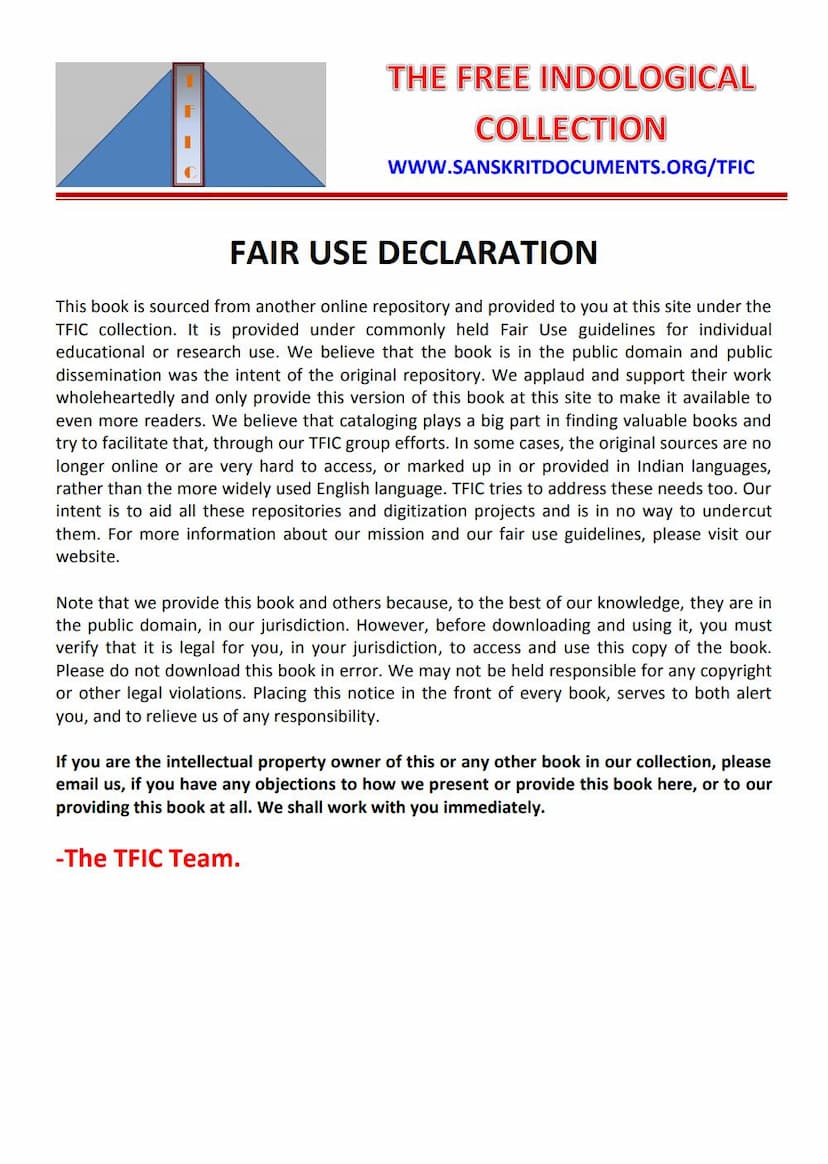Jain Ramayana
Added to library: September 2, 2025

Summary
This document is a comprehensive summary of the "Jain Ramayana" by Krushnalal Varma, published by Granthbhandar Mumbai. The book is a Hindi translation of the seventh chapter of Acharya Hemachandra Suri's "Trishashti Shalaka Purusha Charitra," which details the lives of sixty-three great souls. This particular volume focuses on the seventh chapter, which primarily narrates the story of Rama and his epic journey, aligning with the Jain tradition.
The book was initiated to make the lives and teachings of revered Jain figures accessible to Hindi-speaking readers, as many original texts were in Sanskrit, Magadhi, or Gujarati. The author acknowledges the vastness of Hemachandracharya's work, which covers the lives of 24 Tirthankaras, 12 Chakravartis, 9 Baladevas, 9 Vasudevas, and 9 Prativasudevas, totaling 63 prominent figures.
This "Jain Ramayana" is an adaptation of the seventh chapter, which chronicles the story of Rama. The author notes that while the original chapter has thirteen sections, this translation covers only ten, focusing on the characters of Rama, Lakshmana, and Ravana, and omitting the other three sections to maintain the focus on the "Ramayana" narrative. The translation is based on a Gujarati translation published by the Jain Dharmaprasarak Sabha of Bhavnagar, which the author found to be a faithful rendition of Acharya Hemachandracharya's words. The author also highlights that the Hindi translation includes the original Sanskrit verses for ethical sayings, providing an added benefit for readers.
The book is dedicated to Seth Kesharimalji Gugaliya, an honorary magistrate and scholar, for his generous support in purchasing over 125 copies, enabling the publication and initiation of the "Mahavir Hindi Jain Granthamala" series.
The introduction also provides brief synopses of the other ten chapters of the "Trishashti Shalaka Purusha Charitra," giving a broader context of the Jain epic.
The "Jain Ramayana" itself delves into the origins of the Rakshasa and Vanara lineages, detailing the rise of Ravana, the conquest of various rulers by Ravana, the birth of Hanuman, the lineage and marriages of Rama and Lakshmana, their exile, the abduction of Sita, the war with Ravana, the death of Ravana, Sita's abandonment and subsequent purification, and finally, Rama's attainment of liberation (nirvana).
Key Jain philosophical and ethical concepts are woven into the narrative, emphasizing compassion, non-violence, and the cycle of karma and rebirth. The Jain perspective often differs from other versions of the Ramayana, notably in its portrayal of characters and events, aligning with the Jain principles of ahimsa (non-violence) and the concept of Jinas (victorious beings). The text also clarifies that the "Vanaras" were not monkeys but a clan of Vidyadharas, and "Rakshasas" were another lineage.
The book is presented as an effort to fulfill the spiritual and intellectual needs of the Hindi-speaking Jain community, encouraging them to learn from the lives of their virtuous ancestors. The author humbly acknowledges the possibility of errors in the translation and welcomes constructive feedback from scholars.